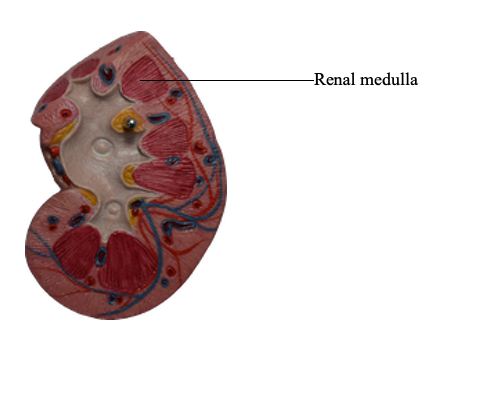Main Model

Renal medulla

The substance of the kidney is made up of an outer
cortex and an inner medulla. A portion of each nephron may be located in
both cortex and medulla, but the renal corpuscles are only present in
the cortex. The cortex can be divided into an outer zone and inner zone
based on the distribution of the corpuscles. The medullary rays are
groups of straight collecting tubules and loops of Henle in the cortex.
Between the medullary rays are cortical labyrinths, composed of renal
corpuscles and convoluted tubules.
According to the combination of renal tubules at
different areas, the medulla may also be divided into an outer zone and
inner zone. The outer zone is further subdivided into an outer stripe
and inner stripe.
The medulla is arranged into 10-18 pyramidal
structures, known as renal pyramids. The base and sides of the renal
pyramids are within the cortex, and their vertices, the renal papilla,
protrude into the minor calyx. The renal pyramids are separated by a
layer of connective tissue and the renal column, which possesses
cortical structure. One renal pyramid is also called a lobe. A renal
lobule is composed of a single medullary ray and the cortical tissue
surrounding it.